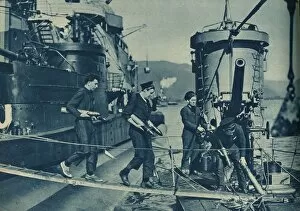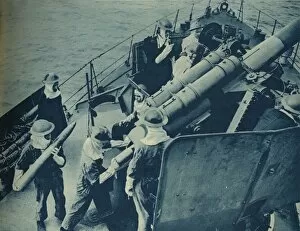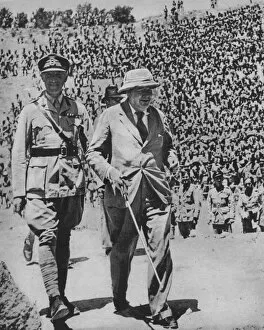John Hammerton Collection (#7)
Sir John Alexander Hammerton, a renowned artist and historian, captured the essence of war through his captivating illustrations
For sale as Licensed Images
Choose your image, Select your licence and Download the media
Sir John Alexander Hammerton, a renowned artist and historian, captured the essence of war through his captivating illustrations. From depicting the commanding presence of 8th Army commander Bernard Law Montgomery to illustrating the courageous charge of hooded British Territorials at Loos in 1915, Hammerton's art brought history to life. In 1917, he immortalized the triumphant sound of bagpipes leading Highland Regiments to victory in "The Campbells are Coming. " His attention to detail was evident as he depicted the historic landing from River Clyde at Seddul Bahr during Gallipoli campaign on April 25th. Hammerton's talent extended beyond battle scenes; he also created intricate maps that shed light on significant events. He illustrated the Russian retreat from Galicia in 1915 and their invasion of East Prussia during World War I. Additionally, his map showcased Germany's Cameroon Colony and provided a large-scale view of Verdun's struggle. His work wasn't limited to warfare alone; Hammerton highlighted other aspects too. In one piece titled "Women at Work that Men might Fight, " he emphasized women's contributions during wartime. Another artwork portrayed a chaplain conducting an impromptu service on Sunday along the Western Front in 1917. Through his artistry, Sir John Alexander Hammerton left an indelible mark on history by capturing pivotal moments with meticulous precision and evoking emotions that transcend time.

















